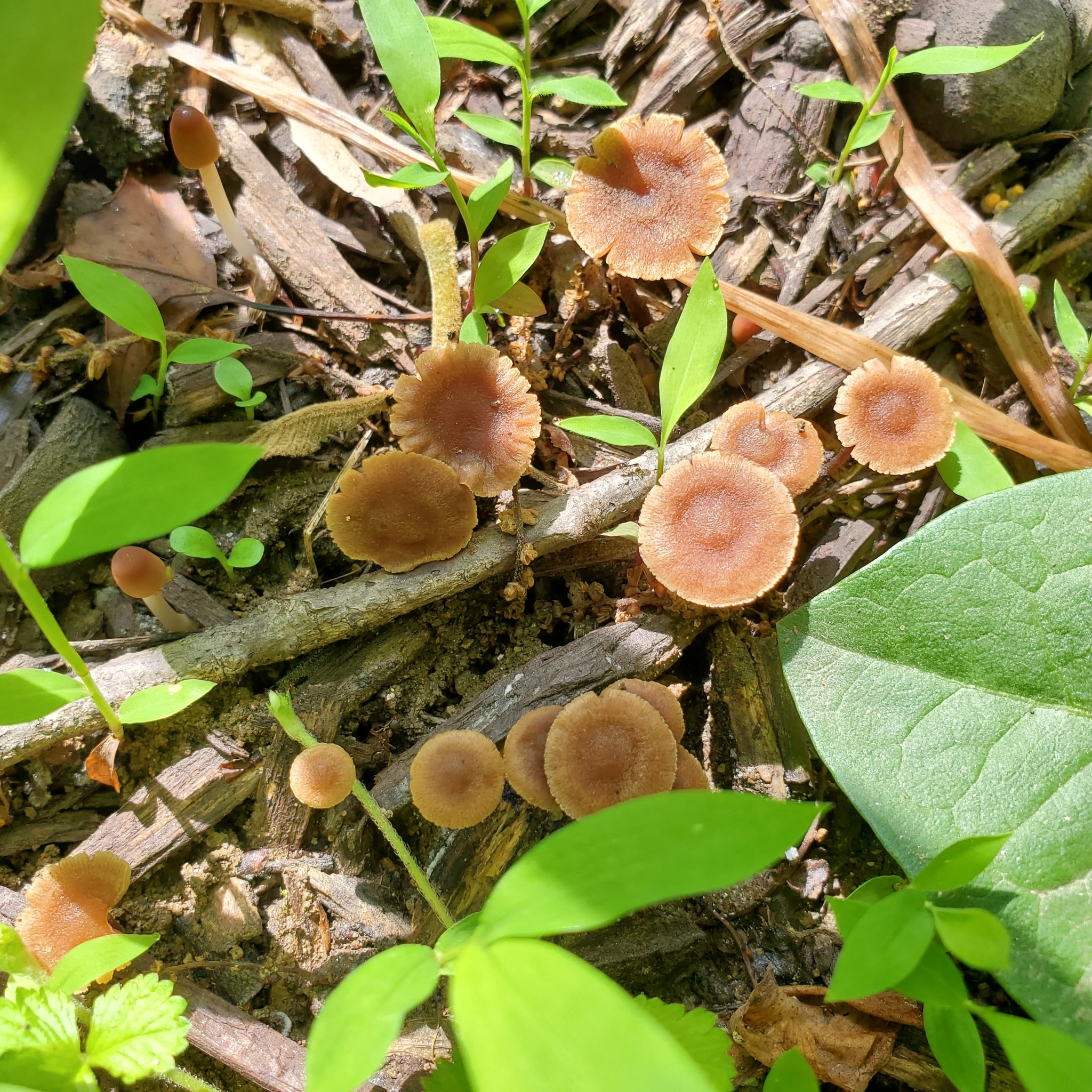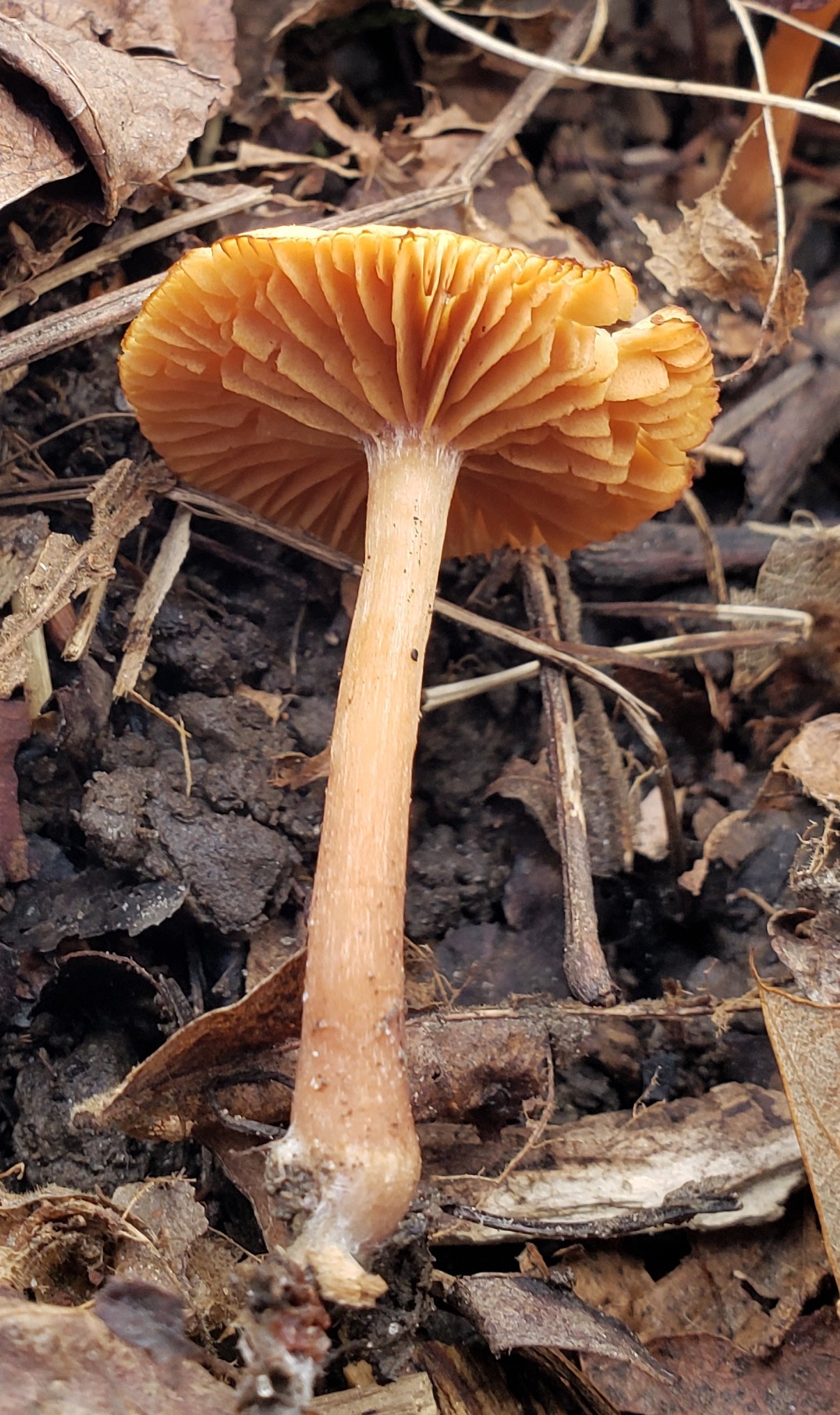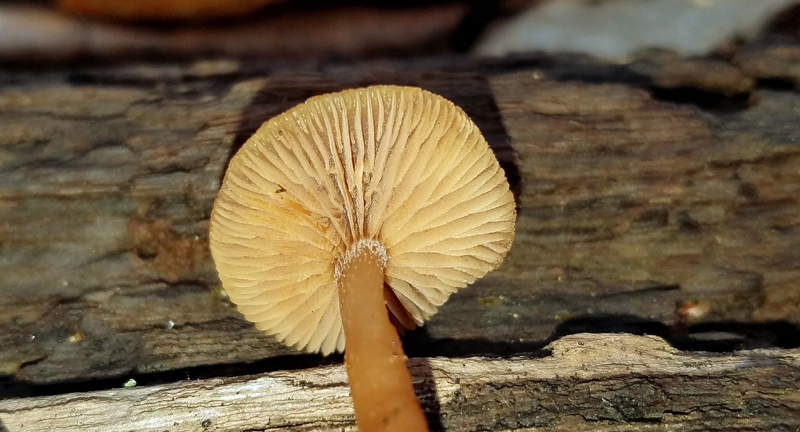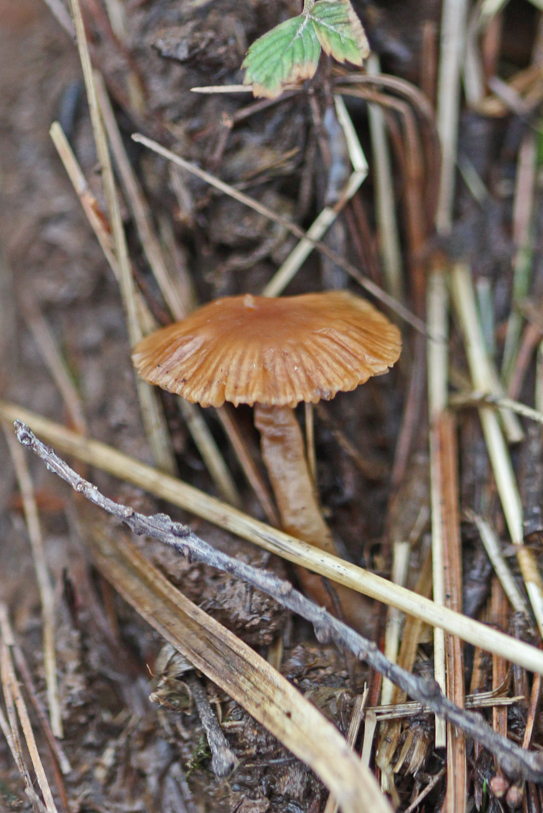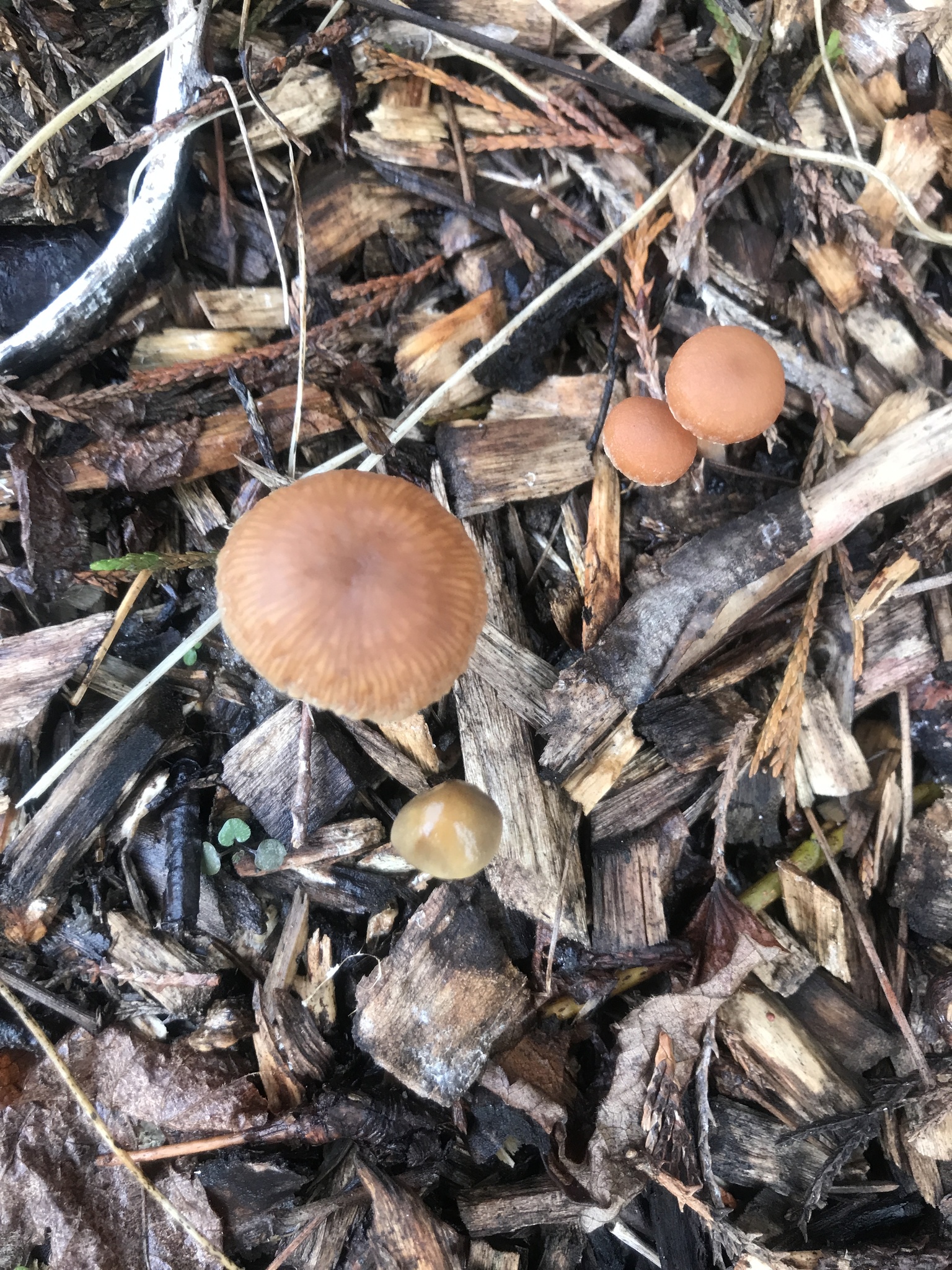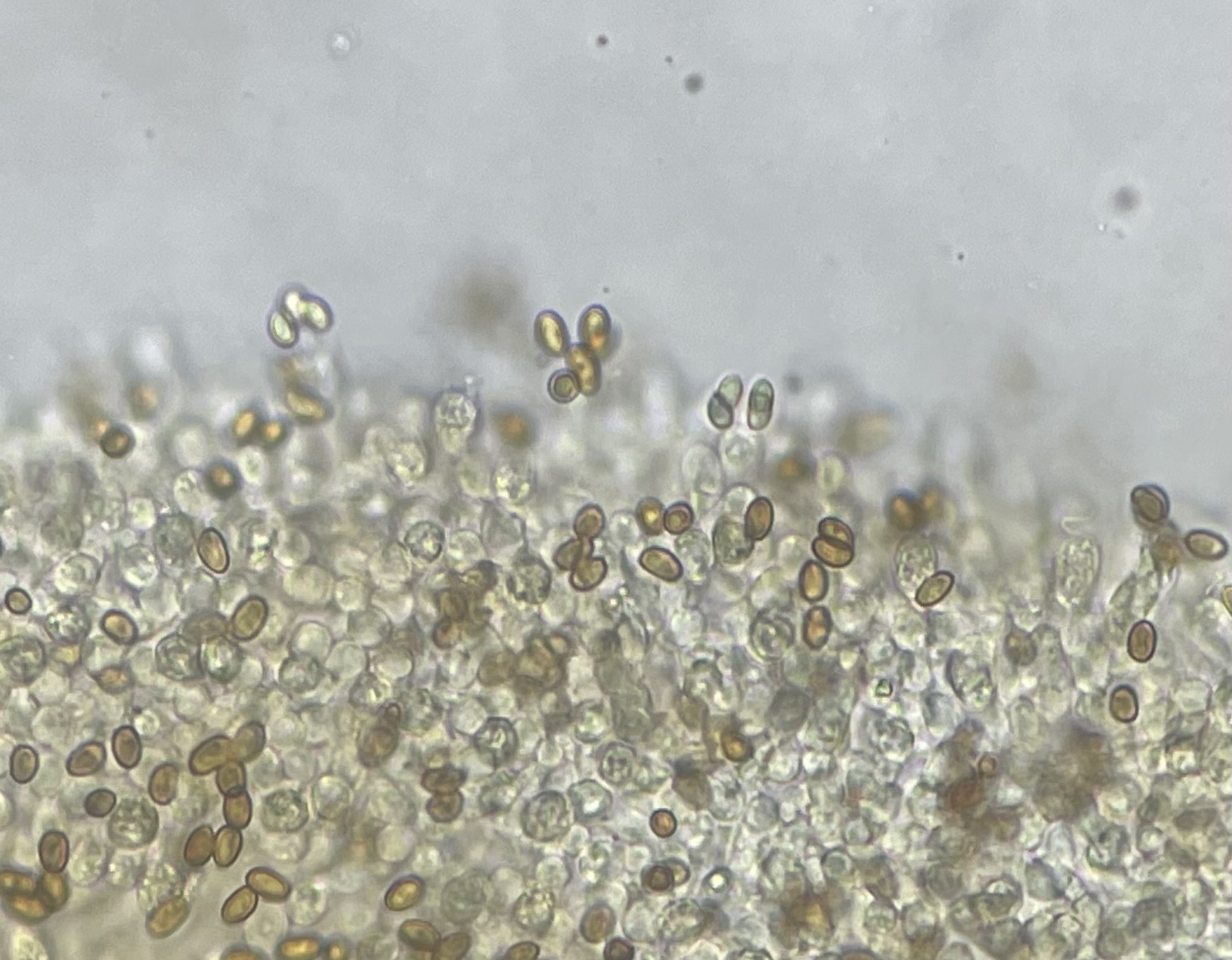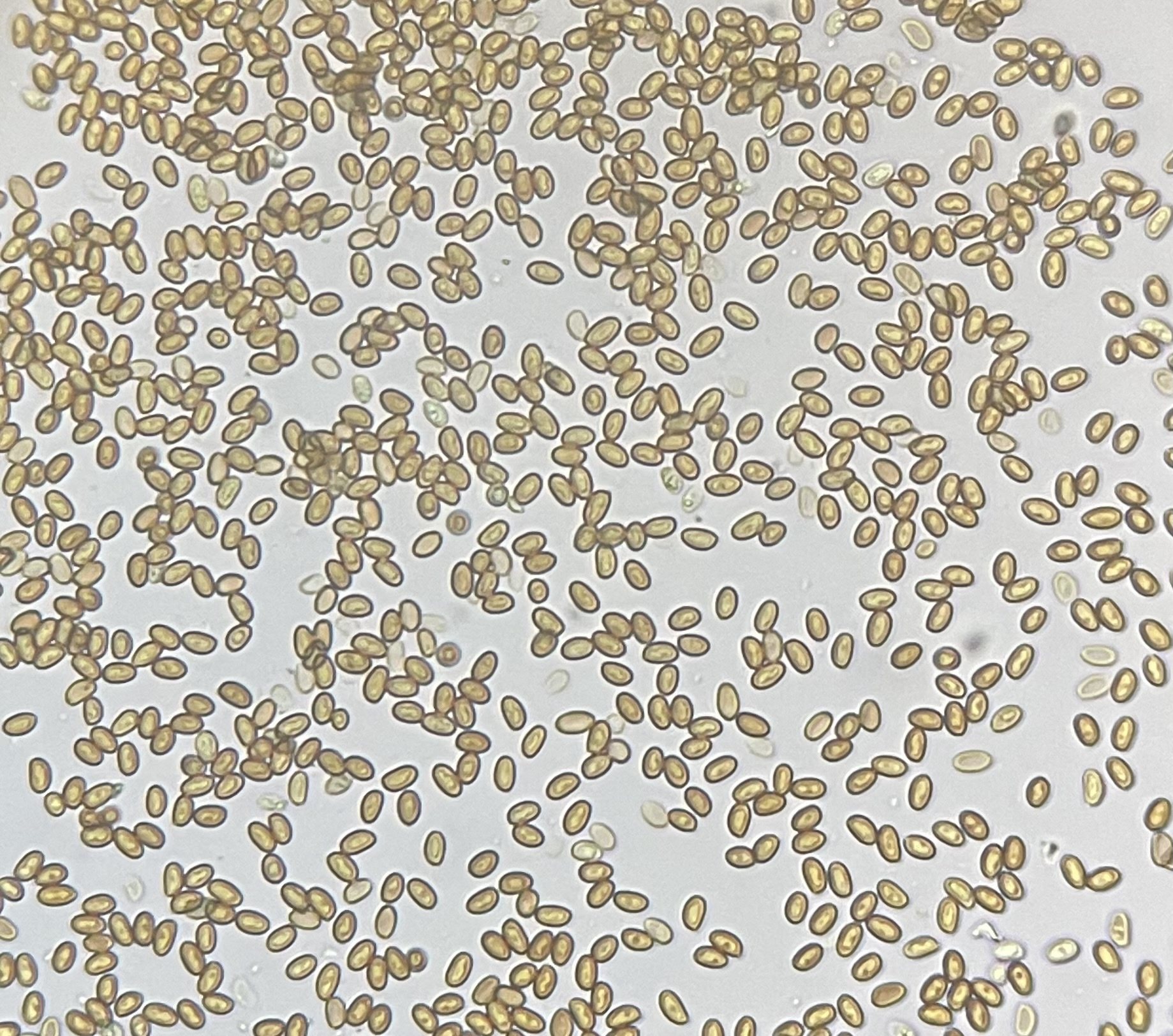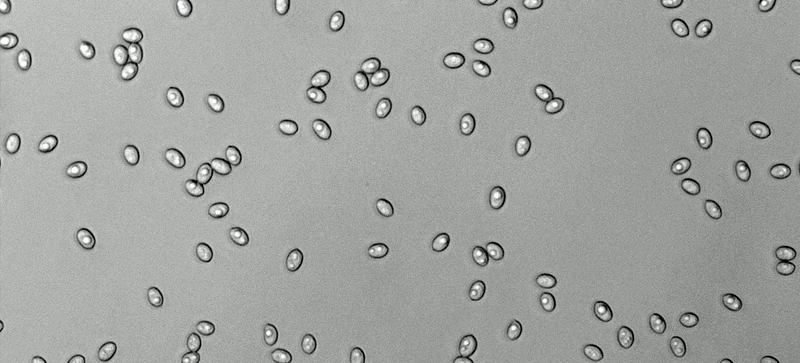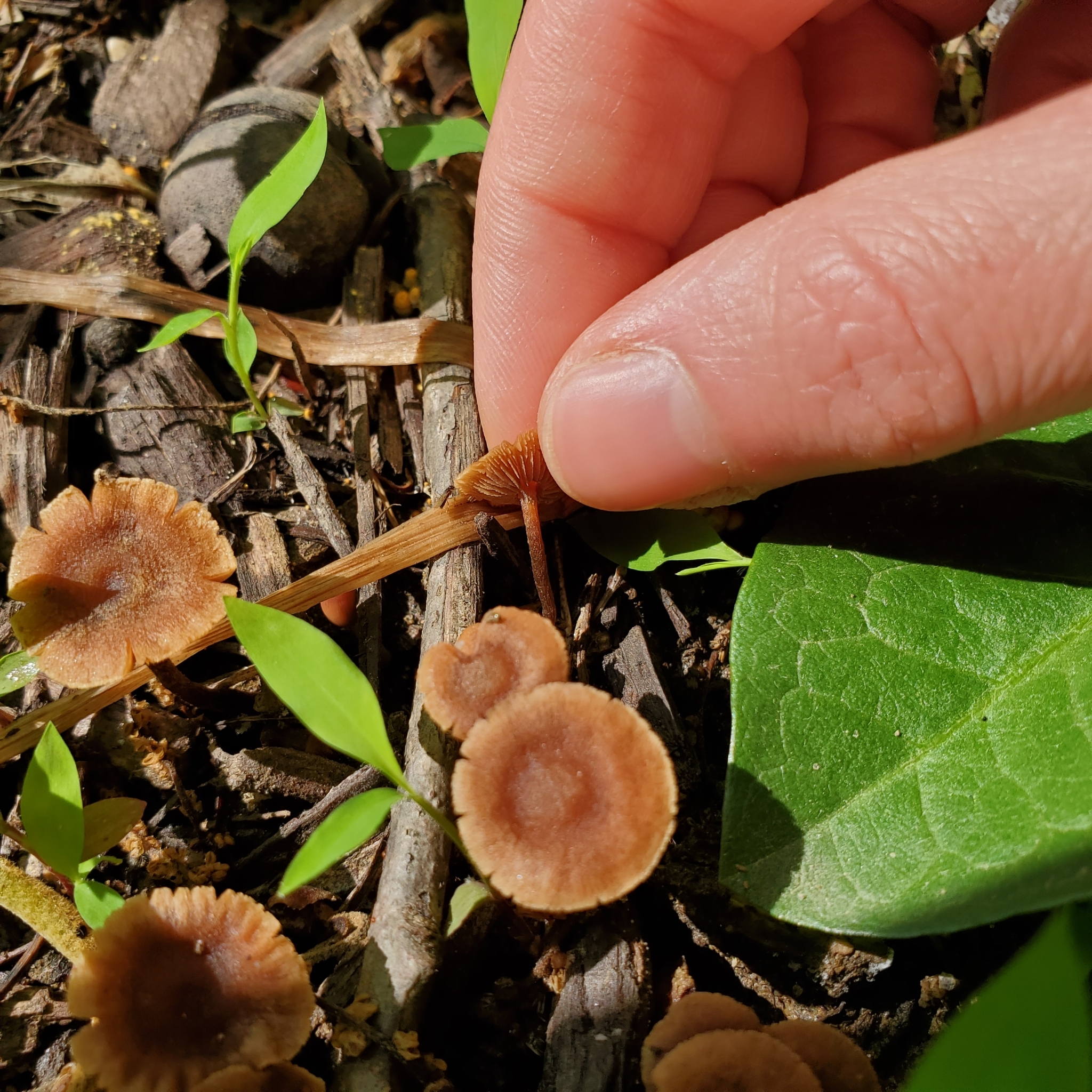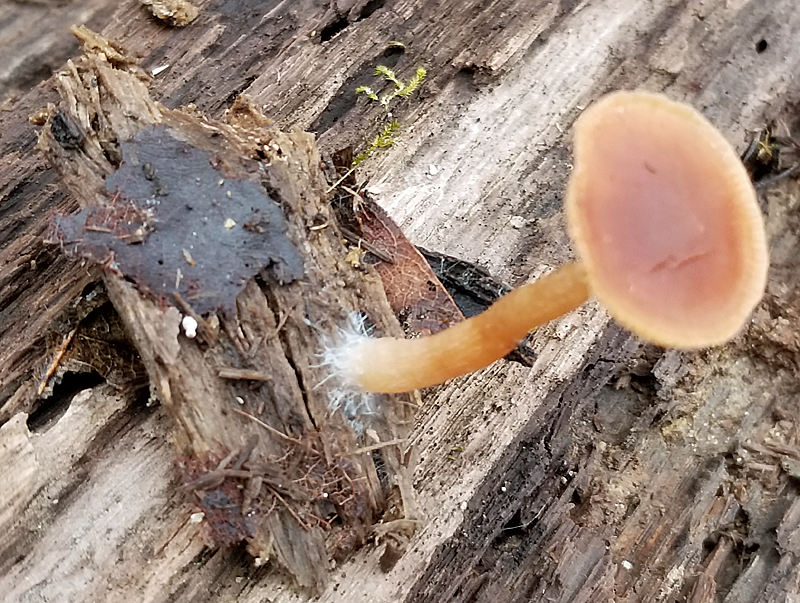Map Snapshot









21 Records
Status
Found scattered, in groups, or occasionally in clusters on sticks, woody debris, or buried wood.
Description
Cap: Convex to flat, surface moist, smooth with tiny white fibers, hygrophanous; reddish-brown to pinkish-tan; white marginal veil remnants may be present; flesh thin, yellow-brown. Gills: Close, pale yellow, veined on faces. Stalk: Equal to slightly enlarged below, pale brown often covered with white fibers, hollow in age; partial veil may leave a flimsy ring or zone; copious white mycelium at base. (J. Solem, pers. comm.)
Seasonality Snapshot
Source: Wikipedia
| Tubaria furfuracea | |
|---|---|

| |
| Scientific classification | |
| Domain: | Eukaryota |
| Kingdom: | Fungi |
| Division: | Basidiomycota |
| Class: | Agaricomycetes |
| Order: | Agaricales |
| Family: | Tubariaceae |
| Genus: | Tubaria |
| Species: | T. furfuracea
|
| Binomial name | |
| Tubaria furfuracea | |
| Synonyms | |
| |
| Tubaria furfuracea | |
|---|---|
| Gills on hymenium | |
| Cap is convex or flat | |
| Hymenium is adnate or decurrent | |
| Stipe is bare or has a ring | |
| Spore print is brown | |
| Ecology is saprotrophic | |
| Edibility is unknown | |
Tubaria furfuracea, commonly known as the scurfy twiglet[1] or totally tedious tubaria,[2] is a common species of agaric fungus in the family Tubariaceae. It was first described by Christiaan Hendrik Persoon in 1801, as a species of Agaricus.[3] French mycologist Claude-Casimir Gillet transferred it to the genus, Tubaria in 1876.[4]
Description
[edit]The mushroom cap is 1–4 cm wide, orange-brown, convex to flat and depressed, with small marginal patches of veil which disappear with age or rain; its odor is mild.[5] The gills are brown and adnate to slightly decurrent.[5] The stalk is 1–5 cm tall and 2–4 mm wide.[5] The spores are pale reddish-brown, elliptical, and smooth.[5]
This species is considered inedible.[6]
Similar species
[edit]Similar species include T. confragosa,[5] Galerina marginata, and Psilocybe cyanescens.
References
[edit]- ^ Holden L. "English Names for fungi 2014". British Mycological Society. Retrieved 2016-01-08.
- ^ Arora, David (1986). Mushrooms demystified: a comprehensive guide to the fleshy fungi (Second ed.). Berkeley: Ten Speed Press. ISBN 978-0-89815-169-5.
- ^ Persoon CH. (1801). Synopsis methodica fungorum (in Latin). Göttingen. p. 454.
- ^ Gillet CC. (1876). Les Hyménomycètes ou Description de tous les Champignons qui Croissent en France (in French). Alençon: Ch. Thomas. pp. 537–538.
- ^ a b c d e Davis, R. Michael; Sommer, Robert; Menge, John A. (2012). Field Guide to Mushrooms of Western North America. Berkeley: University of California Press. pp. 250–251. ISBN 978-0-520-95360-4. OCLC 797915861.
- ^ Phillips, Roger (2010). Mushrooms and Other Fungi of North America. Buffalo, NY: Firefly Books. p. 216. ISBN 978-1-55407-651-2.
External links
[edit]
